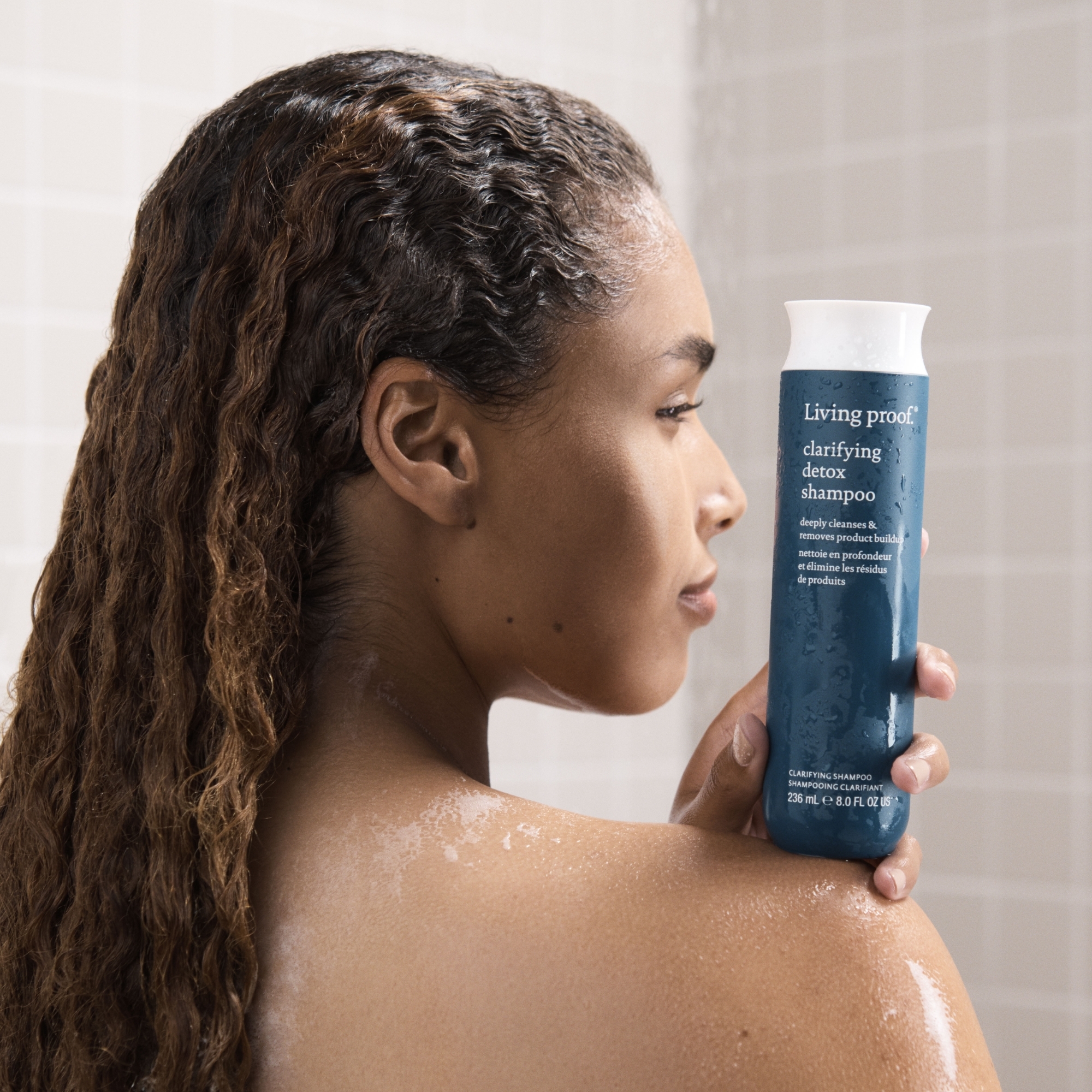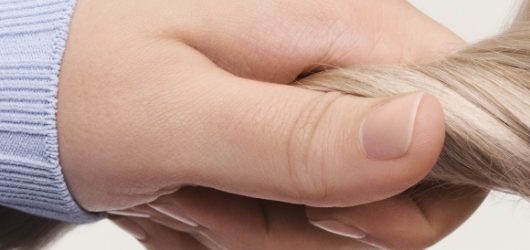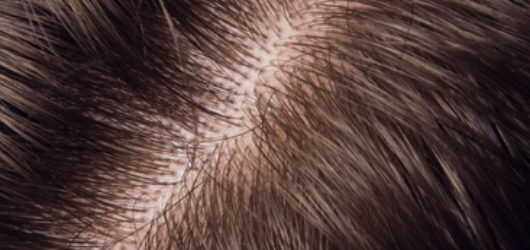
Why Is My Hair So Frizzy? 8 Common Causes & Prevention Tips
Frizzy hair can be relentless. With each strand seeming to have a mind of its own, frizz can turn the simplest hairstyle into a challenge.
While it’s not always easy to prevent, understanding the root causes of frizz can help you overcome it. Here, we delve into what frizzy hair is, the reasons behind it, and how you can address it. Plus, we’ve got styling tips and answers to your most pressing questions. Keep reading for the scientifically-proven solutions you need to say goodbye to frizz.
What is frizzy hair?
According to hair scientists, frizz occurs when neighboring hairs are not in sync (laying in the same direction), resulting in a disordered appearance. This happens when hair is damaged, and there is a lack of the hydrophobic outer layer of the cuticle, known as the F-layer. We know frizzy hair tends to feel rough and, due to the lifted cuticle, looks poofy instead of flat or smooth. However, to understand what frizz actually is, we must look at our hair from the molecular level.
Our hair is made of keratin, a strong, fibrous protein that engages in different bonding interactions. One of these bonds is a hydrogen bond, which is essentially a little connection between water molecules and the building blocks of our hair. Hydrogen bonds allow us to style our wet hair because they reform and hold the new shape as it dries. However, hydrogen bonds are weak and can be easily altered or broken — even by water. When you wash your hair or step outside on a humid day, these bonds break. If your hair is porous or if the cuticle is damaged, it will easily absorb excess moisture and cause your hair’s outer layer to swell, which creates frizz.

In dry environments with less moisture in the air, it’s not broken bonds that cause frizz but something called electrostatic repulsion. Damaged hair tends to have a negative charge (think: what happens when you rub a balloon against your hair). When these negative charges repel each other, smooth and sleek hair transforms into those unwanted flyaways. And unfortunately, dry air or friction can create extra static electricity, making things even harder to manage.
To summarize, too much or too little moisture in the air disrupts the bonds that hold our hair together, lifting our hair cuticles and causing it to fray in many different directions — what we’ve come to know as frizz.
8 Common causes of frizzy hair.
While many of us struggle with similar frizz-born frustration, everyone’s hair is unique. It’s important to know that genetics can play a role in determining your hair type and frizz level; however, many other factors can cause frizzy hair. So, if you’re wondering why your hair gets frizzy, we’ve compiled the most common reasons you may be experiencing frizz and what you can do about it.
1. Shower Temperature
We know how incredible a hot shower can feel, especially in the throes of winter. However, warm water melts away the waxy sebum — your hair’s natural oils — on your hair and scalp, making it easier to remove with shampoo. When these natural oils are washed away, hair can become dull, dry, and lose its shine.
Regardless of temperature, water can cause the cuticle to swell. During the shampoo process, warm water helps open your hair cuticles and enables you to wash away dirt and build-up. On the other hand, cold water minimizes the loss of your hair’s natural oils and leaves a hydrophobic coating. So, to help prevent frizz, it’s important to seal the cuticle with a cold-water rinse.
Don’t worry; we’re not asking you to avoid hot showers altogether. But, if you’ve been wondering why your hair is frizzy after you wash it, try cutting back on those long, super hot showers. We know that may sound like a challenge during the cold winter months, but trust us — it’s worth it.
2. Overwashing
If your frizz feels never-ending, you may be overwashing your hair. Overwashing can lead to the removal of the F-layer (the hydrophobic layer of the cuticle). When the F-layer is damaged, hair is more susceptible to moisture and humidity in the atmosphere, which breaks hydrogen bonds and causes hair to frizz.
To combat this, you can start by finding the ideal washing frequency for your hair type and incorporating the right products into your haircare routine. Living Proof’s Anti-Frizz Shampoo was designed to clean hair effectively while helping to repel dirt and oil, allowing you to extend the time between washes.
3. Styling Habits
Certain habits can make you more prone to frizz. Frequent use of heat-styling products, such as hair straighteners, curling irons, or blow dryers, can damage the cuticle. Additionally, chemicals in hair dye (and other chemical treatments) can deplete the hydrophobic outer layer of the hair and cause bonds to break. Dye has a high pH that causes the cuticle to swell, meaning active ingredients and dyes can more easily penetrate the cortex and leave hair more susceptible to frizz.
Repair damage from color services using a bond builder. Try to avoid heat products by air-drying your hair or embracing your natural style when you can. And, when this isn’t feasible, you can further prevent frizz by incorporating a heat protectant into your styling routine.
4. Excess Friction
If you’ve wondered why your hair is so frizzy, undetected friction may be the answer. Friction occurs when one object moves over another. It’s common, natural, and unavoidable, but unfortunately, it lifts the hair cuticle and causes breakage, which leads to frizz. The most common causes of friction with hair include brushing or combing, flat-ironing, towel-drying, and tossing and turning while you sleep.
Fortunately, there are many ways to reduce the impact of friction on hair. Start by lubricating your hair with serums or conditioners. Many conditioners have been shown to reduce resistance when hair encounters friction, making it less prone to cuticle lifting and breakage.
Also, avoid using cotton towels and aggressively towel drying your hair. Cotton towels can be rough on damp strands, leading to frizz or breakage. Reduce friction by blotting hair with a microfiber towel instead; this will help absorb excess moisture and minimize damage.
Lastly, swap out your cotton pillowcase for one made of silk, or wrap your hair in a silk scarf while you sleep. Alternatively, try using an overnight treatment. While you probably can’t control what goes on while you sleep, these small steps can help you prevent tangles and reduce breakage.
5. Environment
Your surroundings can significantly impact the level of frizz in your hair, with humidity and dryness both playing a role. Moisture and humidity can cause the hair to swell up to 14%. Imagine gaining 14% water weight by stepping outside (for example, a 130-pound person would gain 18 pounds). Your clothes wouldn’t fit the same: your shirt might expand, and your pants might stretch or split at the seams. The same happens when your hair swells from excess water — the cuticle starts to lift and curl, sometimes splitting and breaking away.
A great way to combat humidity is by applying oil to your hair. The oil acts as a barrier on the outer layer of the hair. It prevents the absorption of excess water by replacing the outermost hydrophobic (water-repelling) layer of the cuticle, which reduces the impact of too much moisture on the hair.
Conversely, in drier climates or conditions like winter, our hair can become parched and draw moisture to try and rehydrate to overcome this, leading to frizz. No matter where you are, finding the right products can help you maintain a healthy moisture balance. Living Proof’s No Frizz Smooth Styling Spray, No Frizz Smooth Styling Cream, and No Frizz Smooth Styling Serum are all specially formulated to deliver seriously smooth hair for different hair types. Incorporating the No Frizz System (No Frizz Shampoo, Conditioner + Styler) has been scientifically-proven to reduce frizz by 75% and leave hair 6x smoother after one use.
6. Genetics
It’s no secret that hair texture is passed on from generation to generation. And unfortunately, some hair types are more prone to frizz. Curly hair types naturally have more cuticle lift as the hair bends and curves. Additionally, the texture of these hair types makes it harder for sebum (your hair’s natural oil) to travel from your roots down the length of your hair, which helps your hair repel water and reduces friction between fibers.
The right products can help you embrace your hair’s natural texture. Unleash the power of your curls with these versatile curl products created to help you fight frizz, amplify your natural curl pattern, and leave your hair feeling stronger than ever.
7. Harsh Ingredients
If you’re experiencing frizzy hair, the products and ingredients in your haircare routine may be to blame. Pay close attention to what’s in your shampoo. Products that contain sulfates can strip hair of its natural surface oils, resulting in dryness, scalp irritation, and increased frizz.
Avoid common ingredients like Sodium Lauryl Sulfate, Sodium Laureth Sulfate, and Ammonium Lauryl Sulfate. Instead, opt for a sulfate-free shampoo that gently cleanses hair and protects against frizz by leaving strands nourished, polished, and friction-free.
8. Damage
Hair damage can result from a number of common practices such as chemical services (coloring, bleaching, dying, straightening, etc.), sun exposure, and excessive friction. While damage is largely unavoidable, there are some things you can do to restore and repair damaged hair.
When hair is damaged, the outermost hydrophobic layer of the cuticle (F-layer) is removed, which makes it easier for water to penetrate the hair. Plus, the cuticle can lift and can break away in some cases, which increases friction. When the protective cuticle layer is damaged or even gone, the hair shaft becomes exposed, and frizz becomes almost inevitable.
Start the repair process by adding some much-needed moisture. Masks and the right hair conditioning treatment can transform damaged strands and leave your hair feeling smoother, shinier, and healthier. Additionally, an advanced hair treatment like Living Proof’s Triple Bond Complex is clinically proven to rebuild the structure of your hair. Living Proof’s Healthy Hair Perfector can also restore your hair’s outermost protective layer to help prevent frizz and reduce signs of damage like split ends too.
If you’re interested in taking precautionary measures, heat protectants and ionic blow dryers are a great way to prevent potential heat damage and frizz before it starts.
How to prevent frizzy hair.
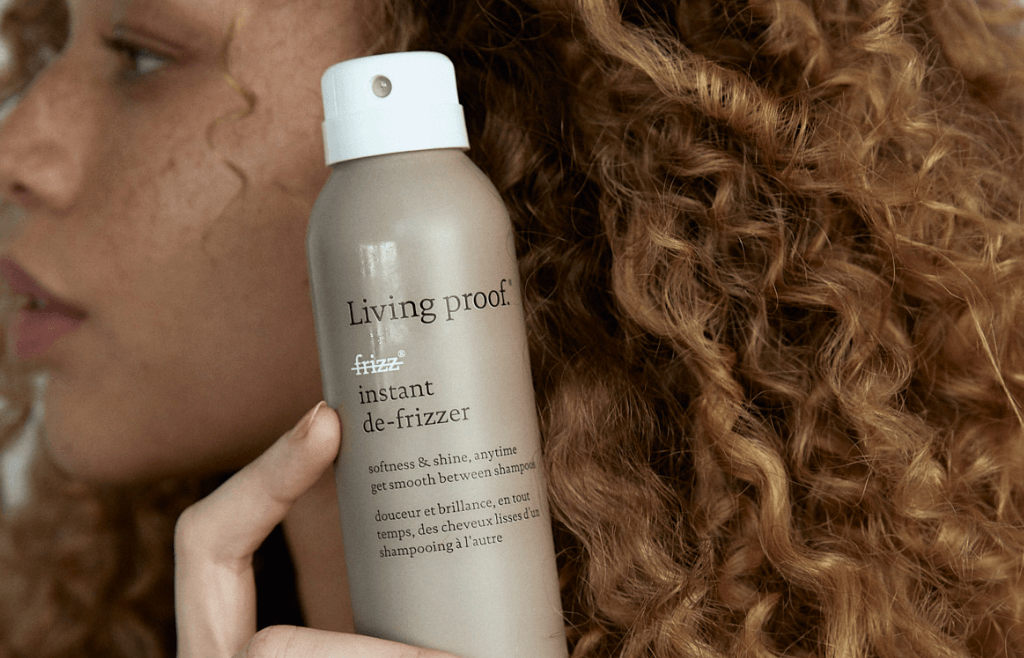
The keys to combating frizz are reducing the impact of moisture and friction on the hair. Once you identify what’s causing your frizz, you can take the right steps to prevent and manage it. Here is a quick recap of how you can help protect your hair.
Avoid damaging products like sulfates and opt for products specifically formulated for frizzy hair. This will help you preserve your hair’s natural oils and moisture while reducing dryness and roughness that can contribute to frizz.
Incorporate a heat protectant when heat styling to prevent damage from straighteners, blow dryers, or curling irons.
Don’t overwash your hair; this can keep the hair cuticle open, leading to dryness and increased frizz. Find the washing frequency that works for you, and use dry shampoo to help extend the time between washes.
Use a microfiber towel to gently blot hair instead of drying aggressively. This will reduce friction, absorb excess moisture, and prevent damage that can lead to frizz.
Remember, everyone’s hair is different. Finding what works for you may take time, but patience and a little experimentation can go a long way.
Tips for styling frizzy hair.
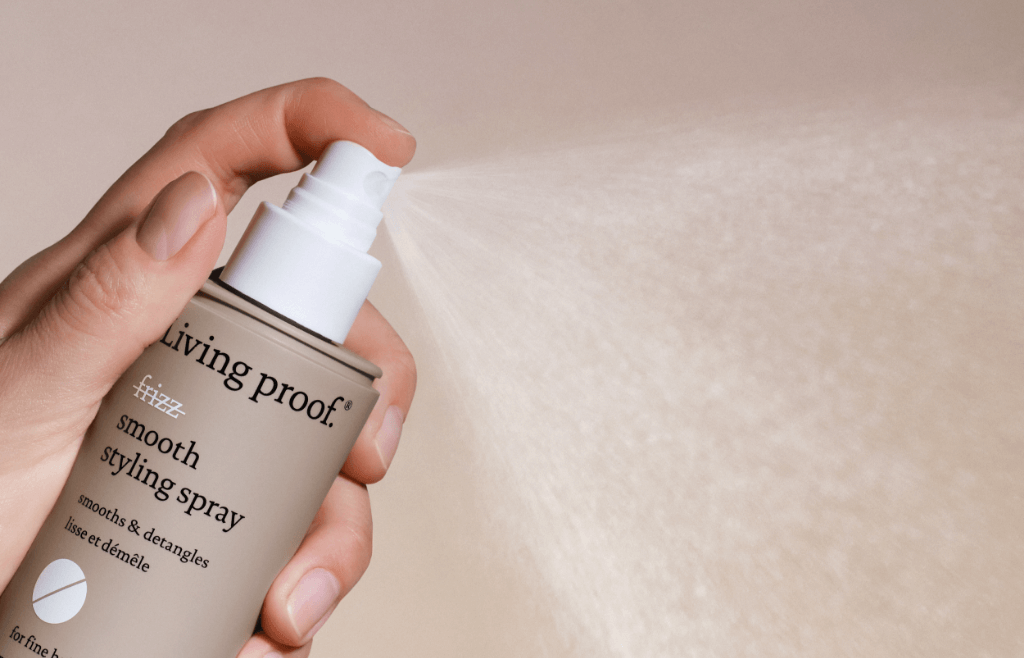
The right hairstyle will depend on your individual hair type and preferences. Whether you have straight, wavy, or curly hair, we’ve got some general tips you can implement into your haircare routine to achieve a style that suits you.
Start in the shower: The foundation for styling starts with a good wash. When you shampoo, focus on your roots and follow up with conditioner throughout the lengths of your hair to prepare it for styling and help prevent potential frizz.
Find the right products: While the right products will depend on your hair type and desired style, Vanishing Oil, Instant De-Frizzer, No Frizz Smooth Stylers, and Curl Conditioning Stylers can reduce the impact of friction on your hair and make it easier to style.
Embrace your natural hair: Dealing with frizz is an opportunity to understand and work with your unique hair texture and characteristics. Instead of repeatedly asking yourself, Why is my hair so frizzy? Try using styling products for your specific hair texture. This will help you smooth the cuticle and replenish the hydrophobic F-layer to minimize the impact of humidity on your hair.
And, for those days when you can’t avoid those wild flyaways, or if you’re in the mood to try out something new, these easy hairstyles are the perfect solution for making the most of your frizzy hair.
FAQs
Which hair types are most prone to frizz?
Curly, wavy, or textured hair is typically more prone to frizz because of the increased cuticle lift that occurs from the curvature of the hair. Chemically treated hair (dyed, bleached, straightened, etc.) are equally susceptible because the high pH of these services can strip away the hair’s protective hydrophobic layer (F-layer), causing the hair to swell and the cuticle to lift.
Does frizz cause split ends?
Frizz does not cause split ends but can indicate underlying hair damage that can lead to split ends if not cared for properly. Damage causes split ends, which can result in hair that looks frizzy, poofy, and less aligned. Prevent split ends with regular trims and incorporate products that promote hair health into your daily routine.
Do some people have naturally frizzy hair?
People with naturally curly, wavy, and more textured hair are generally more susceptible to frizz. These hair types are more prone to absorbing moisture from the air because of the increased cuticle lift that occurs from the curvature of the hair. Even with the same hair type, the degree of frizz can vary from one person to another, so embracing your unique head of hair is key to learning how to manage and prevent frizz.
Tame frizz with Living Proof.
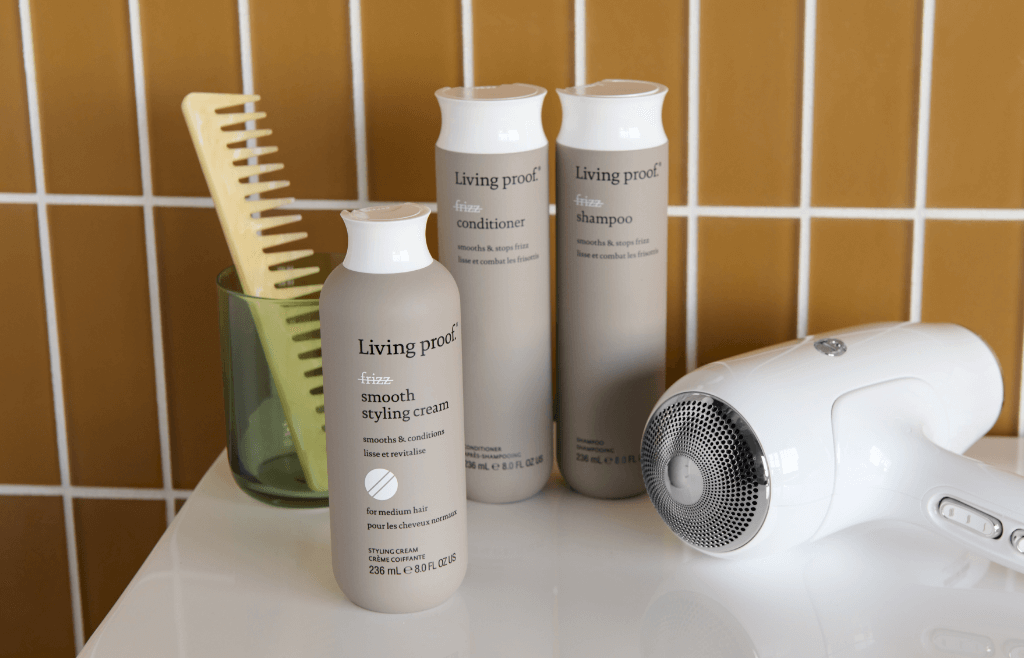
Now that you know what causes frizzy hair, you’re that much closer to addressing it. While everyone’s hair is different, implementing the tips and solutions above, such as finding the right styling products or drying your hair with a microfiber towel, can go a long way.
Combat frizz by using your newfound knowledge and equipping your styling cabinet with products best suited to your hair type. Living Proof’s anti-frizz products are scientifically-proven to combat frizz for various hair types.
Ready to find your perfect haircare routine? Start by taking our Haircare Quiz.

